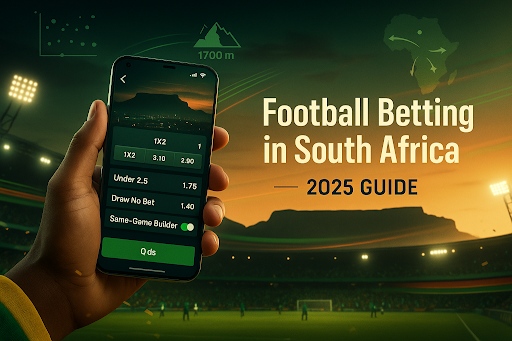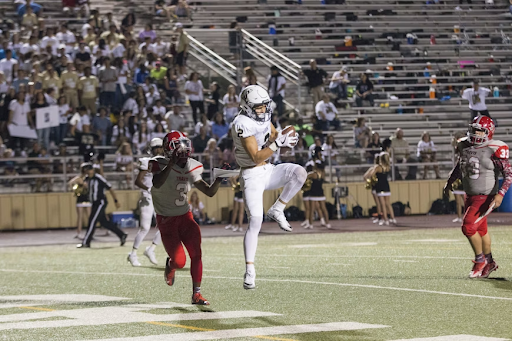South Africa’s football culture is loud, colourful and stubbornly local, even when half the country is checking early kick-offs from London. The betting side mirrors that mix. We bet with our phones—often checking prices on the Hollywood bets app or similar—hunting for value rather than fireworks, and reading form lines in ways that make sense for PSL, not just for Europe’s headliners.
Here’s the thing.
Trends matter, but context pays. CAF set the 2024/25 interclub calendar in mid-July, and those midweeks pile up around November–January; squads feel that squeeze long before social feeds notice. Fatigue shows up in shot volume, not just in scorelines.
Why the local game has its own tempo
The DStv Premiership isn’t built on end-to-end chaos. Matches often tilt toward measured build-up, organised defences and long spells where the first goal feels like a safe being cracked. That naturally props up markets like under goals and draw-no-bet on organised sides. Cup ties and derbies add spice, but the general rhythm nudges cautious bettors toward sensible positions rather than low-probability long shots.
PSL form and the data that actually travels
Form in South Africa can be venue-sticky. Certain home grounds reward patient teams; some pitches slow the ball just enough to turn a would-be sprint into a chess match. Tracking xG is useful, but you’ve got to calibrate it for tempo and pitch profile, not just the shot map. Rotations around continental commitments or domestic cups also nudge totals down on tight turnarounds. It’s not glamorous, but that’s where edges grow. When you price Football betting in South Africa, build your read on those micro-contexts, not imported narratives.
CAF travel, altitude and the human factor
Continental campaigns don’t happen in a vacuum. Travel miles, uneven rest and altitude swings tug at legs and game plans. During the 2010 World Cup, research noted that play above roughly 1,200 m saps endurance even when technical skills hold up; Johannesburg sits near 1,700 m, and the second half is where tired legs give you clues. Coaches know it; smart punters price it.
Markets: from match result to builders
The old trio—1X2, totals, both teams to score—still does work. But same-game builders help you price the story you actually expect: a tight first half, the favoured side edging the second, a disciplined back line conceding few shots on target. Add in cash-out control and price boosts, and you’re not just punting; you’re managing risk like a grown-up.
I still remember a chilly night in Dobsonville when an 88th-minute header flipped a small accumulator from dust to dinner. The lesson wasn’t “hope for late drama”. It was this: my angle—fatigue plus a narrow home edge—was right even before the net bulged. Results catch up to good reads.
Bankroll and staking: smart, not flashy
South African punters talk about a “banker” like it’s a magic key. It ain’t. A banker is just a leg with lower variance than the rest. Treat it as the spine of your slip, not the excuse to stack five long shots around it. Flat staking or a mild percentage plan protects you when variance bites. And don’t chase ’em all on one ticket; spread positions across kick-off windows so you can adjust, cash out, or sit tight without sweating every corner.
Reading the week: rhythms you can actually use
Midweek fixtures after travel weekends? Expect conservative lines from coaches, fewer runners from fullbacks, and lower shot volumes until minute sixty. Friday night openers with two organised sides? First-half unders often deserve a longer look. Sunday fixtures after heavy rain on Saturday? Pitch drag matters. Small edges, stacked properly, build the kind of month that feels quiet but profitable.
Local vs global: how to blend your card
There’s no rule that your coupon can’t hold PSL and Europe together. The trick is not to let European narratives drown the local read. If your Saturday card has a calm, low-event PSL clash, don’t bolt it to a wild La Liga over just for “balance”. Balance is for portfolios; tickets need coherence. Pick markets that sing the same song.
Discipline beats dopamine
Live betting is seductive because it offers action every minute. But the best in-play positions come from situations you mapped before kick-off. You expected a slow burner; the game gives you thirty minutes of midfield wrestling and drifting odds on under 2.5. That’s not luck—that’s your plan meeting the market. And then—reset. Breathe. Don’t turn a good read into a bad chase because a winger smacked the post.
Football edges that stay evergreen
Three anchors rarely go out of date. First, know the manager’s risk tolerance; some coaches simply refuse a shoot-out. Second, watch the second-choice keeper situation; communication lapses alter both set-piece value and distribution tempo. Third, track travel and turnaround; human legs, not buzzwords, decide second-half totals. These are football truths, not just seasonal narratives. As fixture lists clog, even title contenders grumble about congestion—plan for that before the headlines land.
Mobile-first, micro-sharp
Mzansi is mobile-first, so your discipline lives in the palm of your hand. Set limits, pre-price your likely in-play adds, and bookmark the few stats that translate to our tempo: passes per defensive action, shots on target allowed, and set-piece threat. You don’t need ten dashboards—just the right three. If you keep Football betting in South Africa grounded in these rhythms, the edges compound.
Final thought
Betting the local game rewards patience and pattern-spotting. The edges are rarely loud, but they stack. Keep your tickets coherent, your staking sane, and your read tuned to the league we actually watch. When the late header finally lands, you’ll know it was earned, not conjured.




